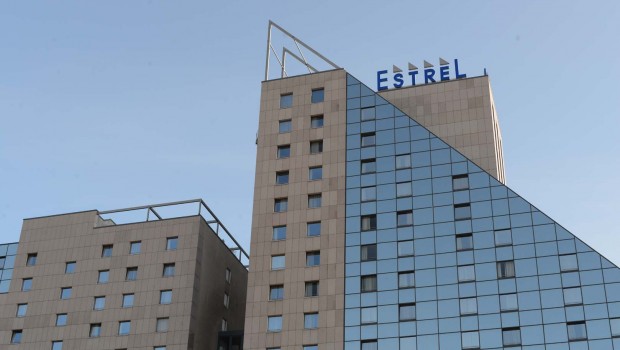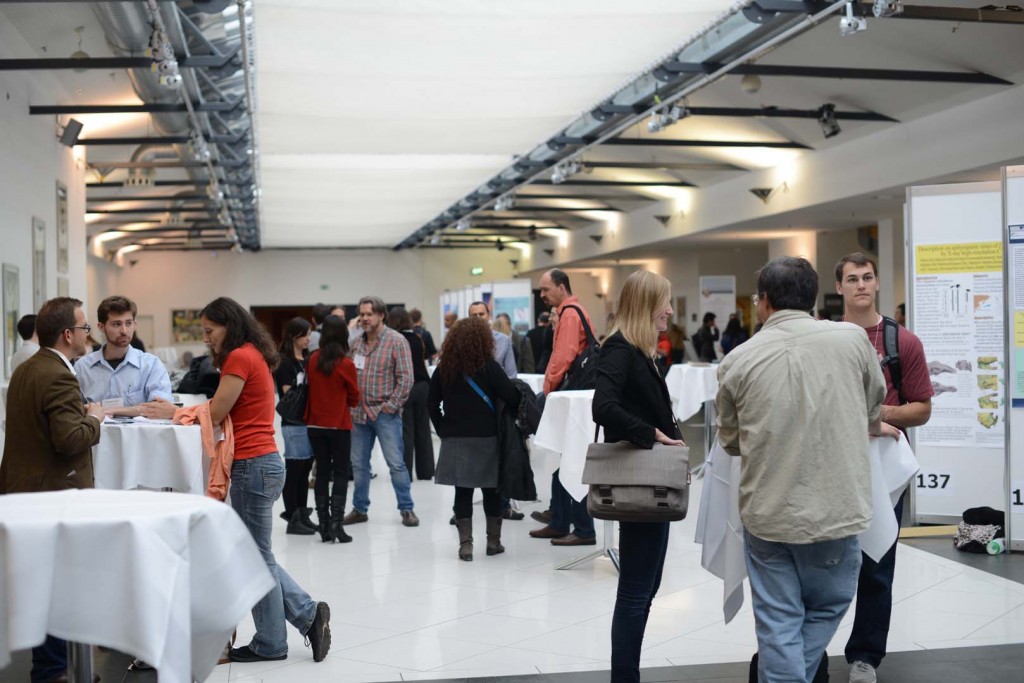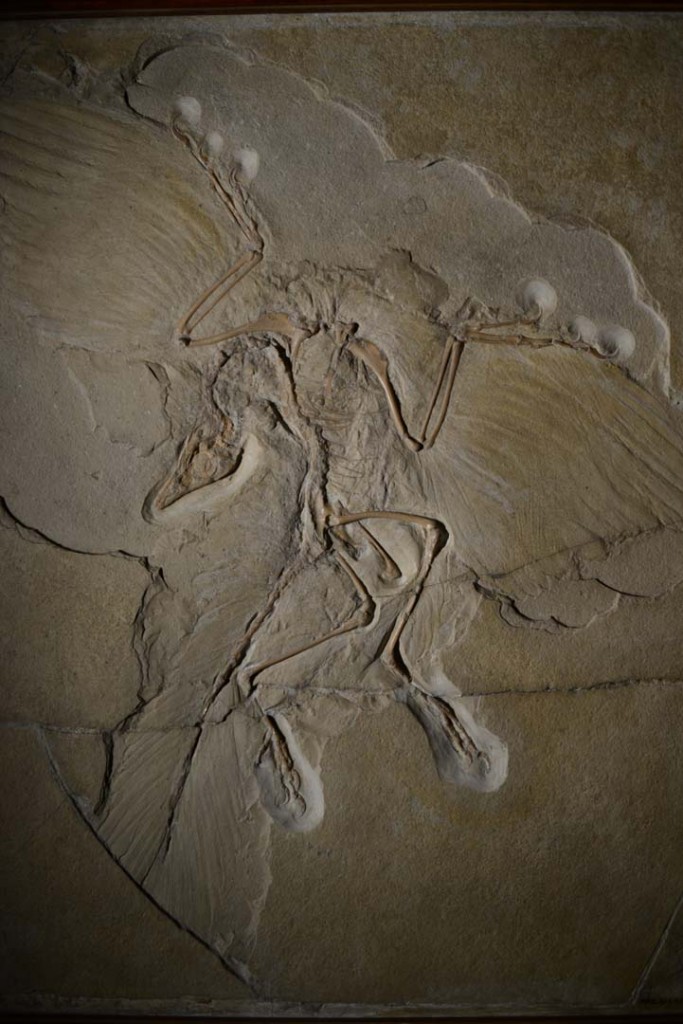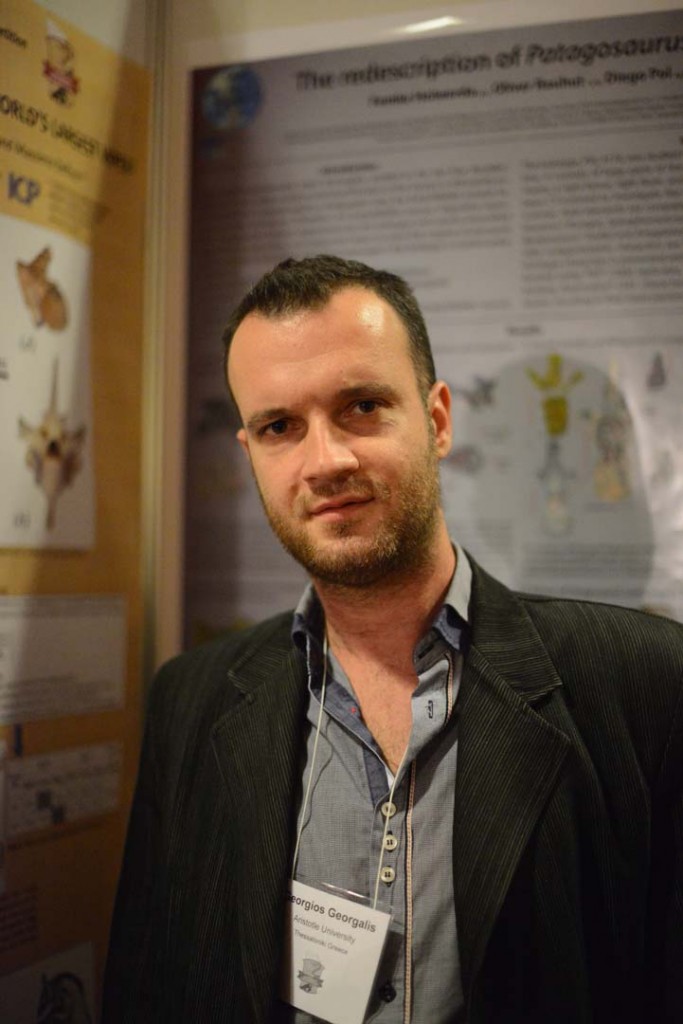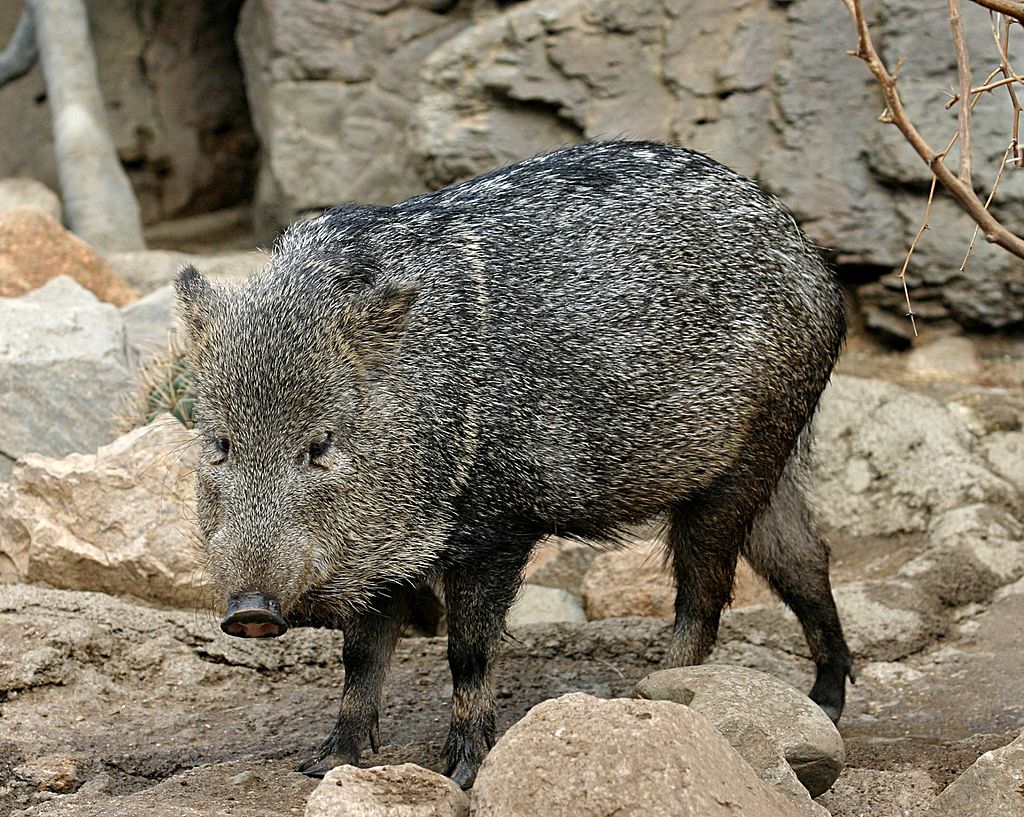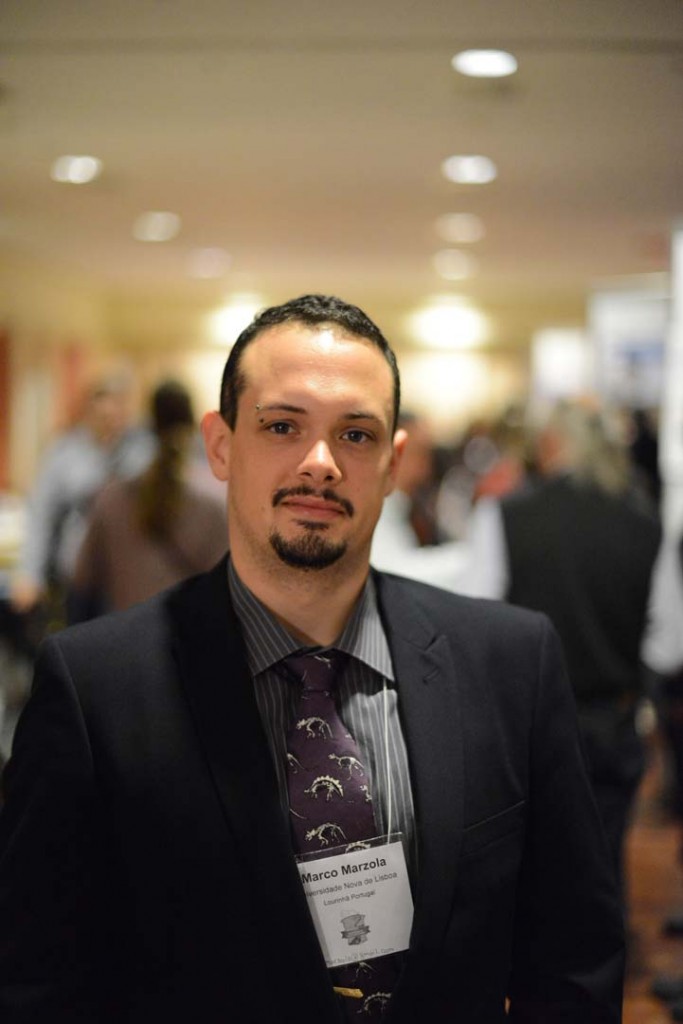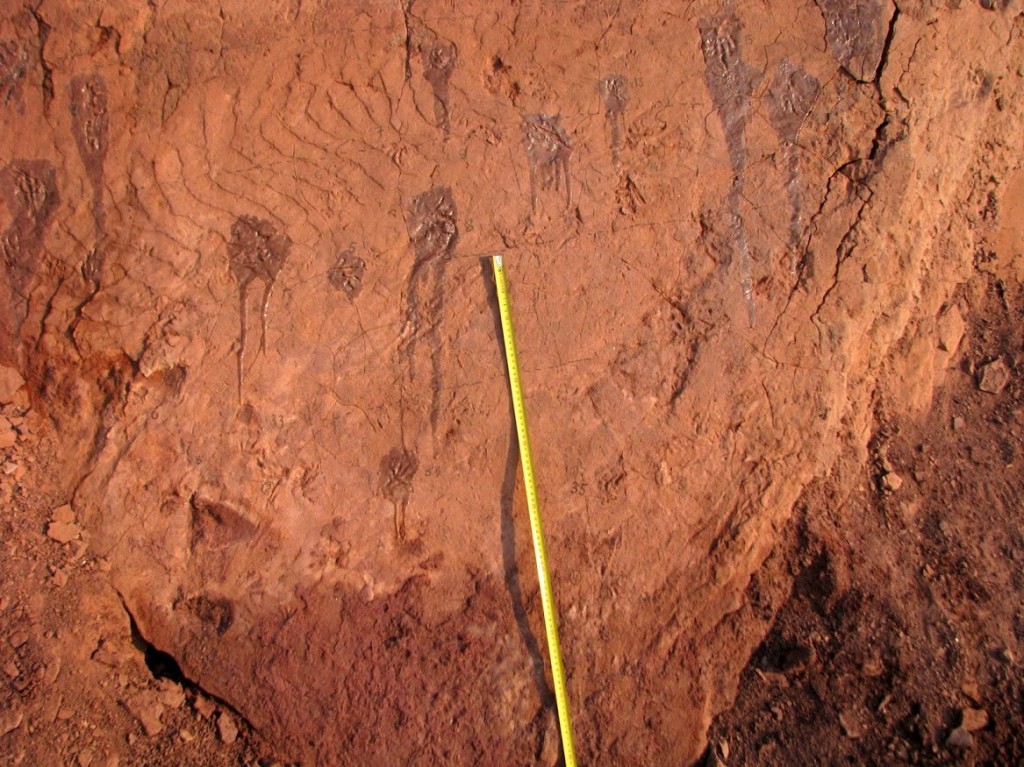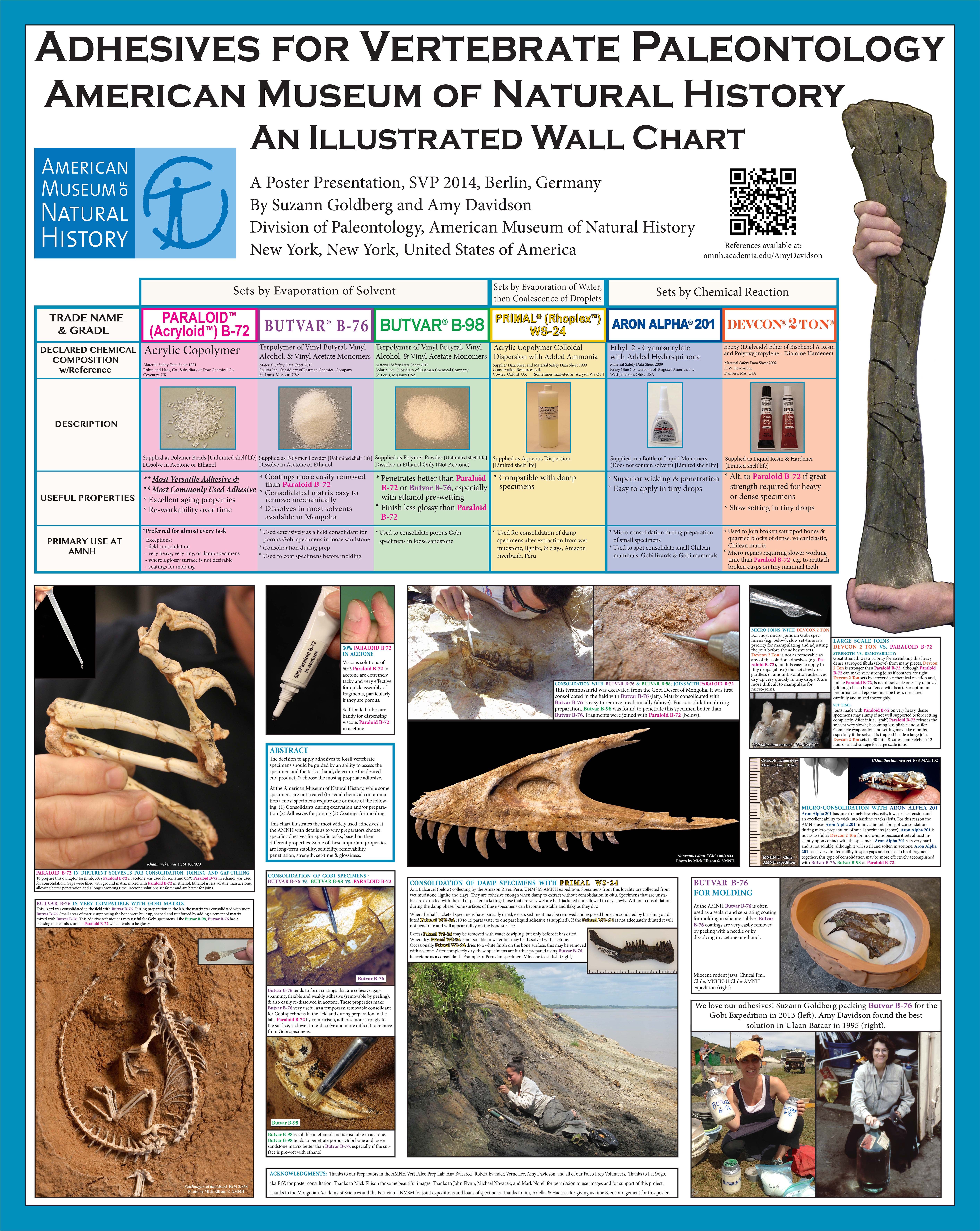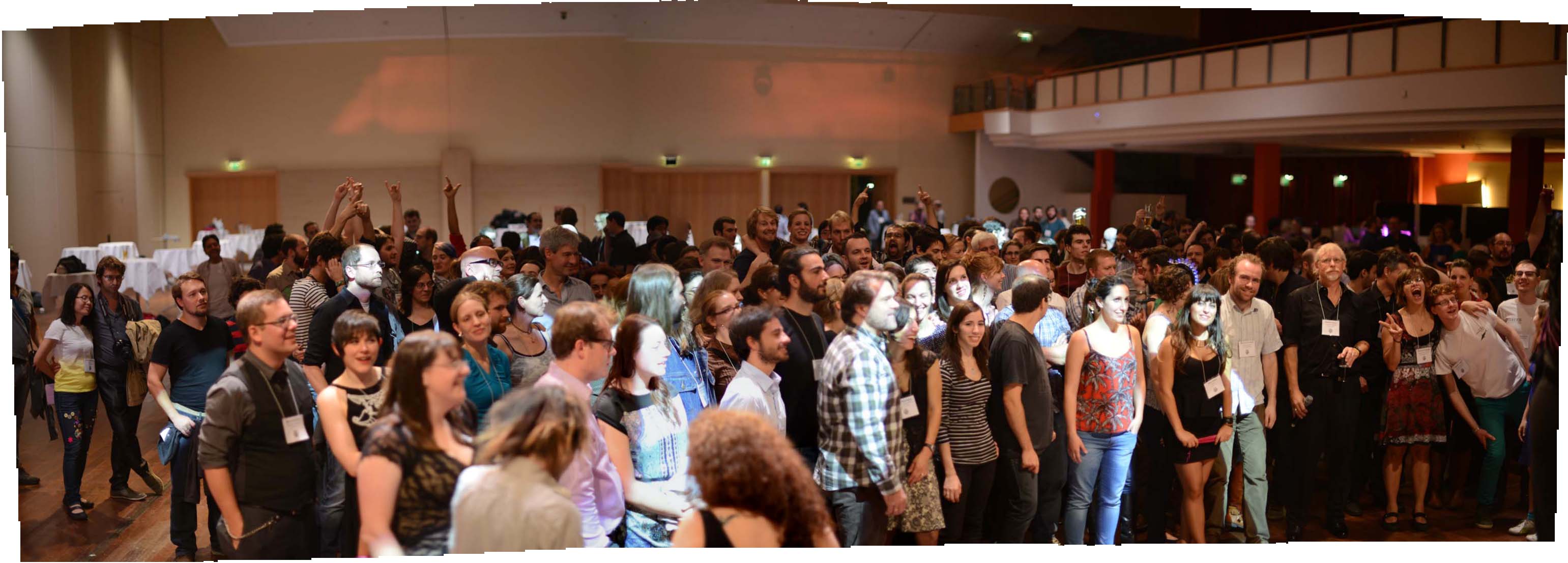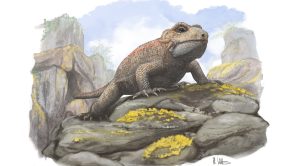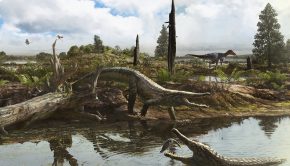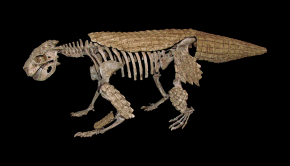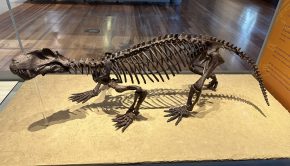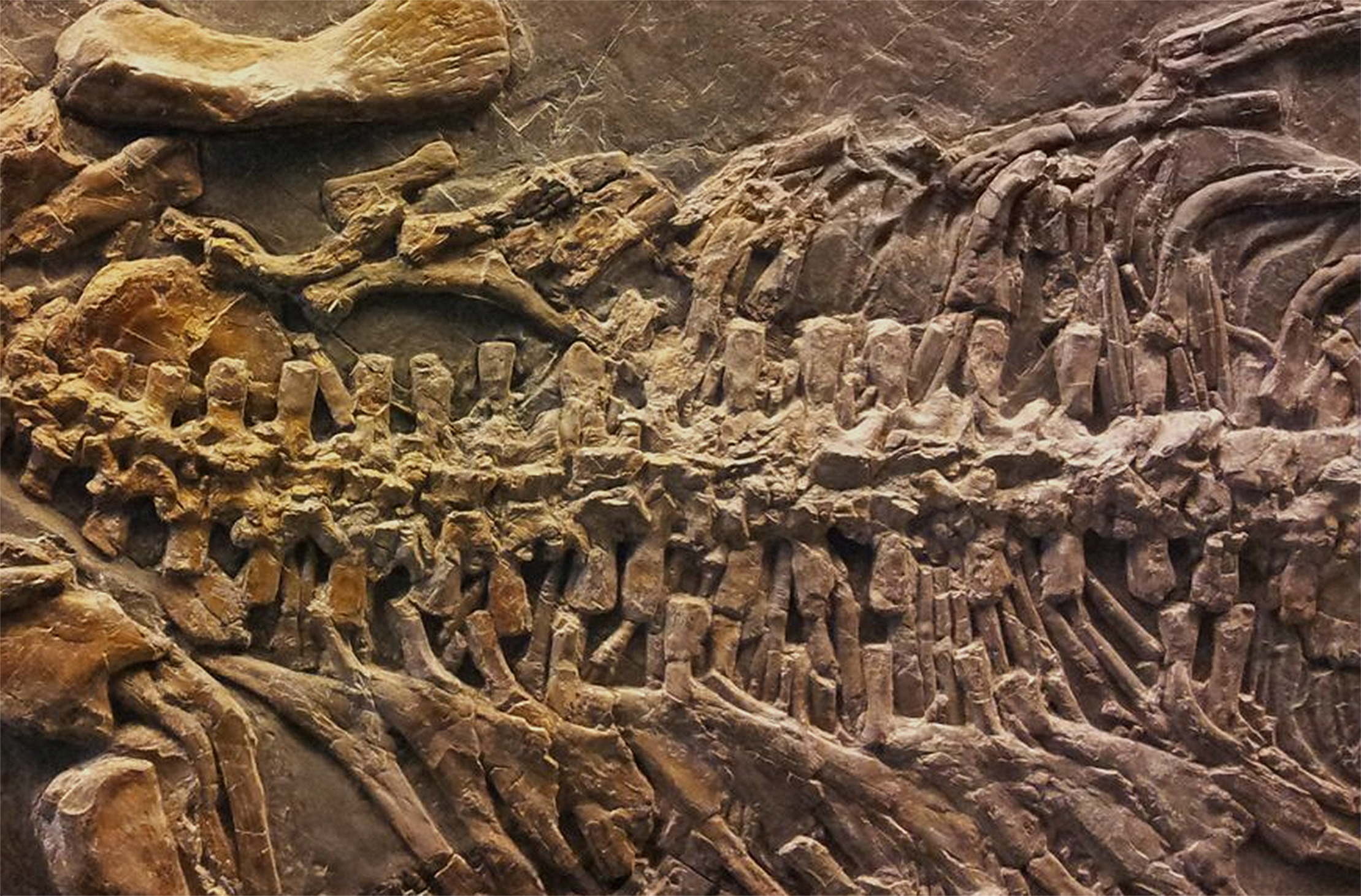The Society of Vertebrate Paleontology 2014
Welcome to our coverage of the Society of Vertebrate Paleontology annual conference held this year at the Estrel Hotel, Berlin, between the 5th and 9th November.
We’re delighted to be back at this event, which is doubtless the biggest dedicated vertebrate palaeontology conference in the world. As per our usual conference coverage, we’re aiming to produce daily multimedia reports to give you an indication of what it’s like to attend such an event and also to bring you the latest news in the field.
Day One
Podcast: Download (Duration: 29:40 — 40.7MB)
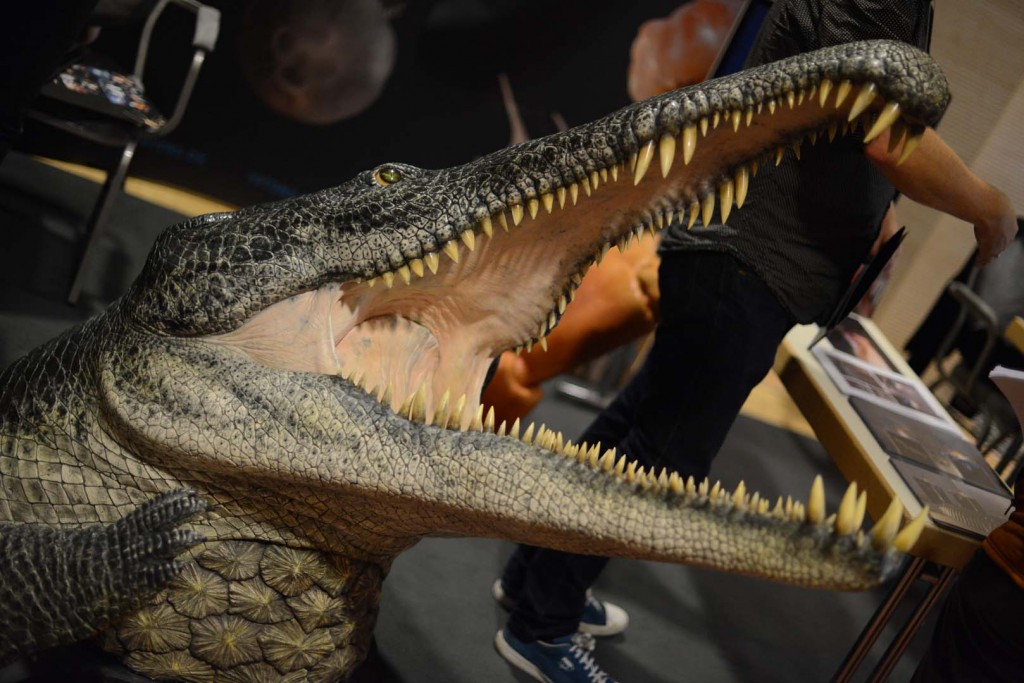
Greeting the delegates into the display room is this 1.5m tall Phytosaur. This model was made by 10Tons for Geocenter Møn, Denmark, supervised by Richard J. Butler and Michelle Stocker.
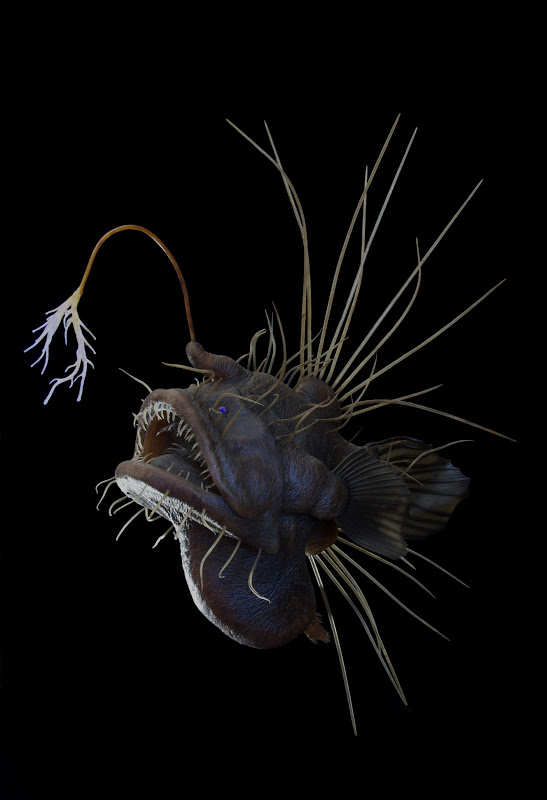
10Tons produce their models to have translucency to provide a more realistic appearance. Caulophryne pelagica 30 cm. Made for The Blue Planet, Copenhagen.
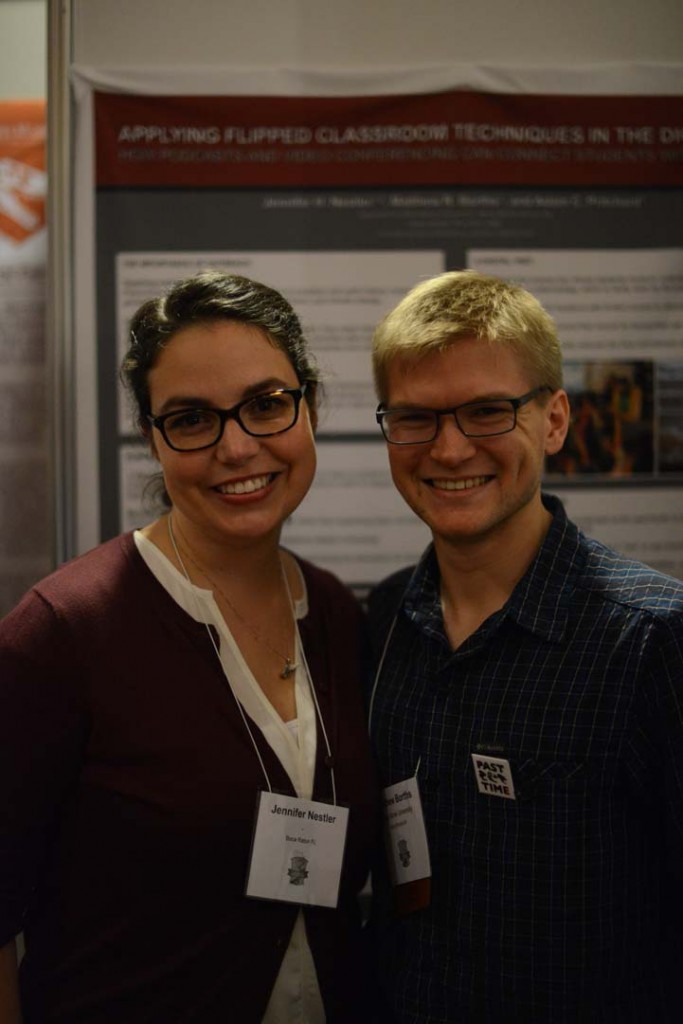
Our friends at the Past Time Podcast have developed a novel way of delivering palaeontology to schools all around the world. Using a combination of their podcast and a live video feed, they’ve been bringing the educational benefit of museum collections into classrooms without any of the logistical or financial restrictions.
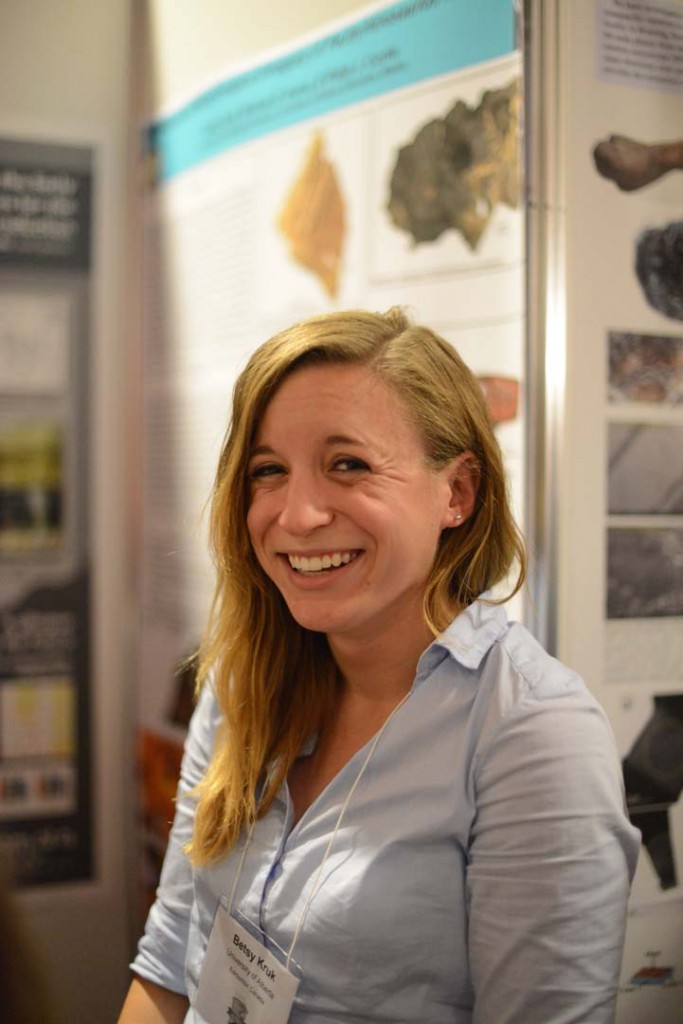
Betsy Kruk, University of Alberta, has been looking at Pachyrhinosaurus, in particular, their ontogeny and the construction of their nasal bosses.
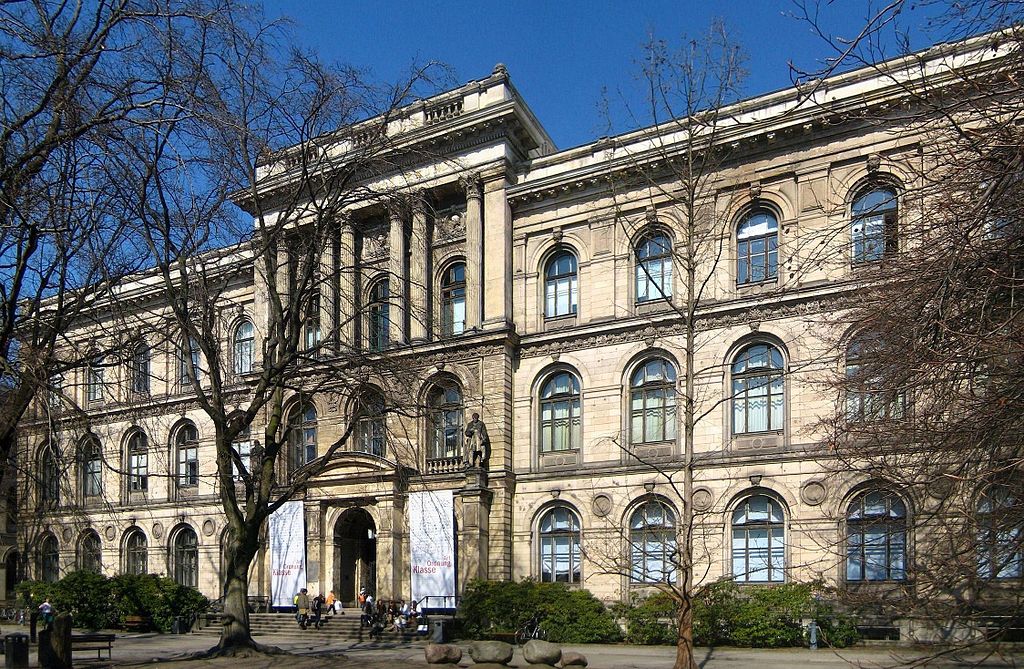
The welcome reception, held on the eve of the first day, was at the world-famous Museum für Naturkunde. Image credit: Beek100 CC BY-SA 3.0
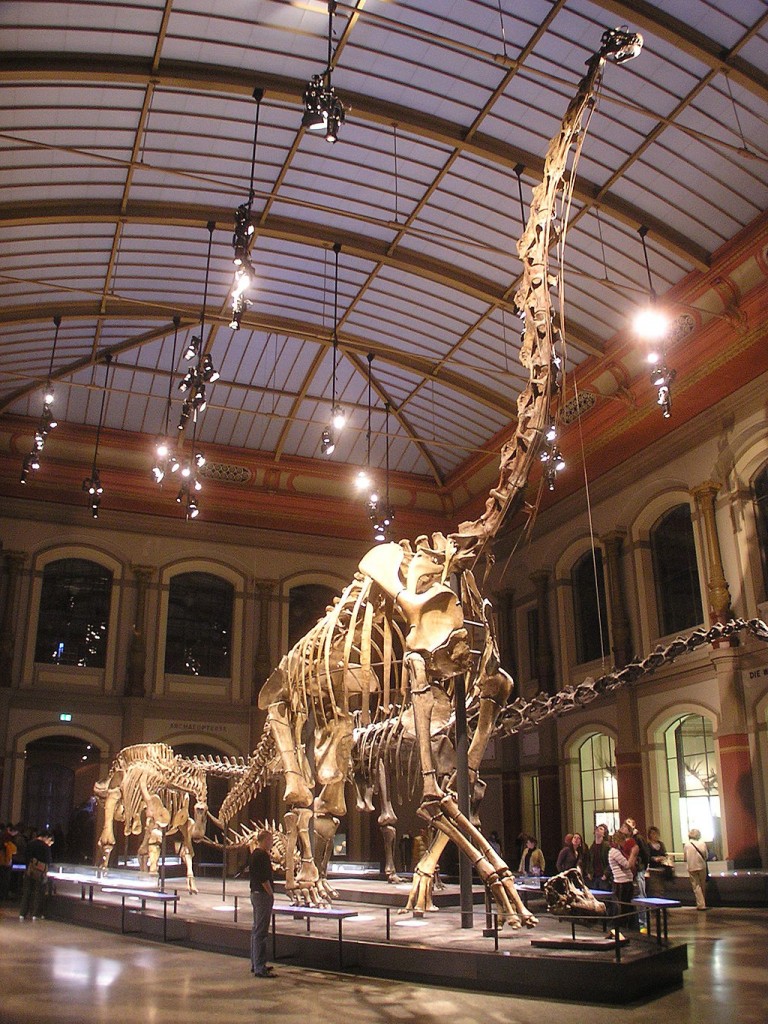
Within the museum we were treated to the local delicacy, currywurst, and fine German beer and were left to talk long into the night.
Day Two
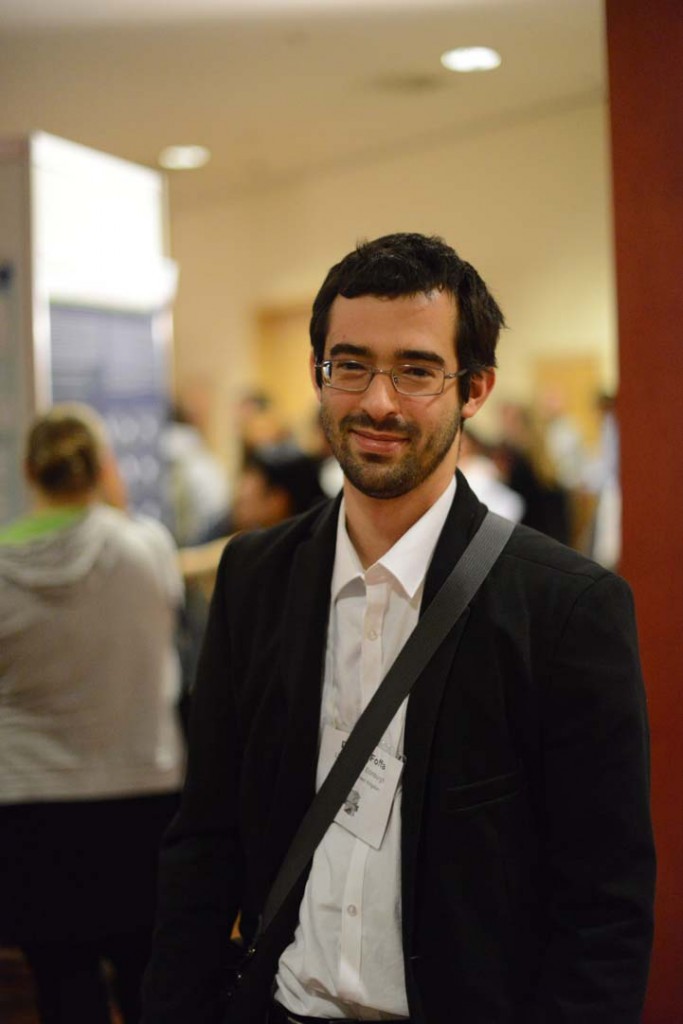
Davide Foffa who gave a presentation on the Middle Jurassic marine crocodylomorph Tyrannoneustes lythrodectikos.
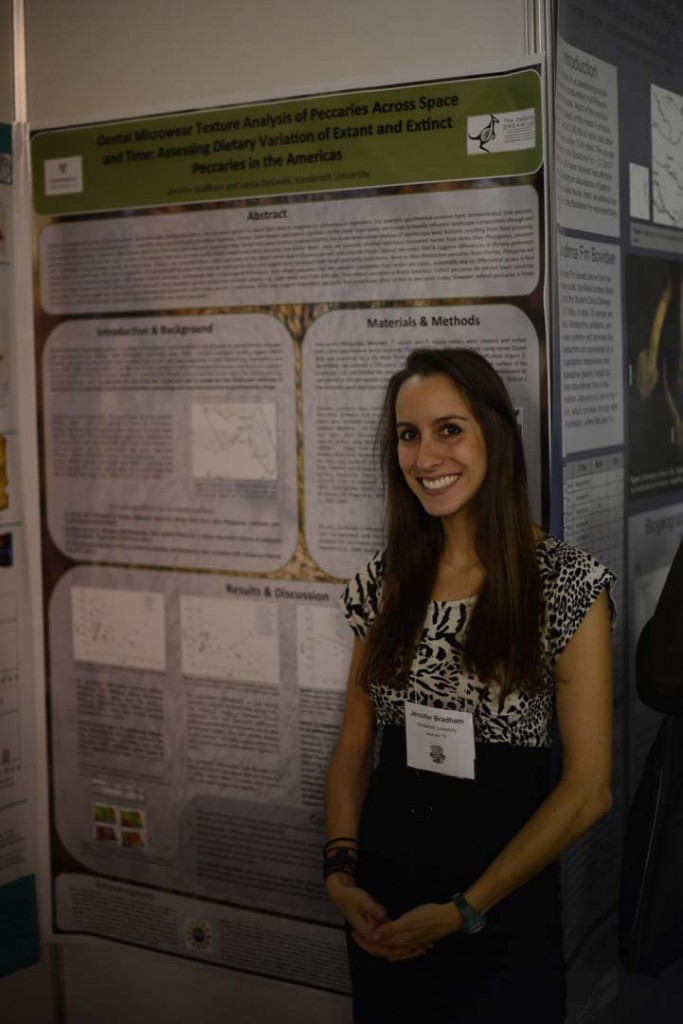
Jennifer Bradham, who talked to us about using wear patterns on teeth to figure out the diet of fossil peccaries.
Day Three
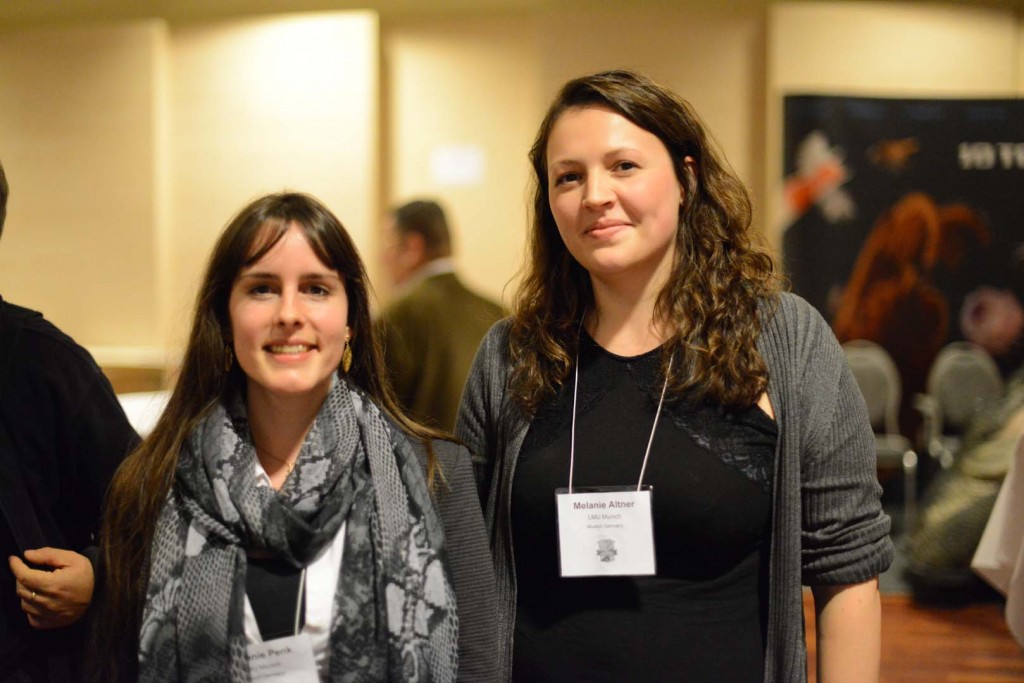
Stephanie Penk and Melanie Altner have both been studying the fish of the East African Rift Valley. The cichlid fish found there have long been used as evolutionary models and both Stephanie and Melanie are looking at their fossil record in the Tugen Hills Lagerstätte.
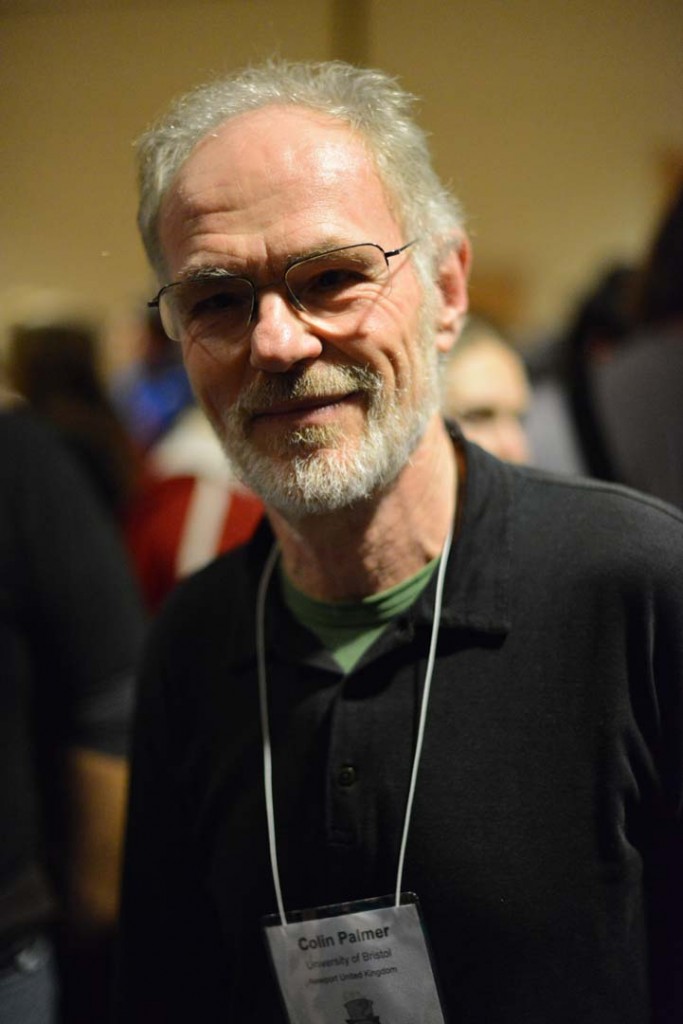
Colin Palmer, University of Bristol, an engineer-turned-palaeontologist has been investigating whether take-off capacity may have been a limiting factor in maximum pterosaur size.
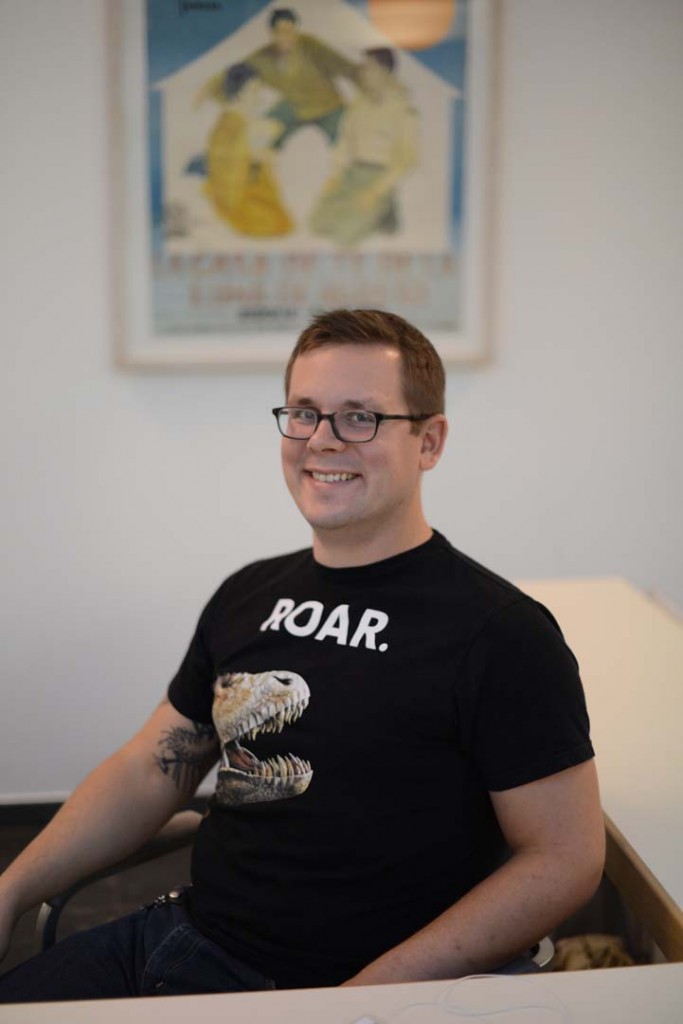
Brian Switek is a palaeontological journalist best known for his ‘National Geographic blog‘ and for his tweeting @laelaps. Brian has produced several children’s books and is currently producing a new video series called ‘Dinologue‘.
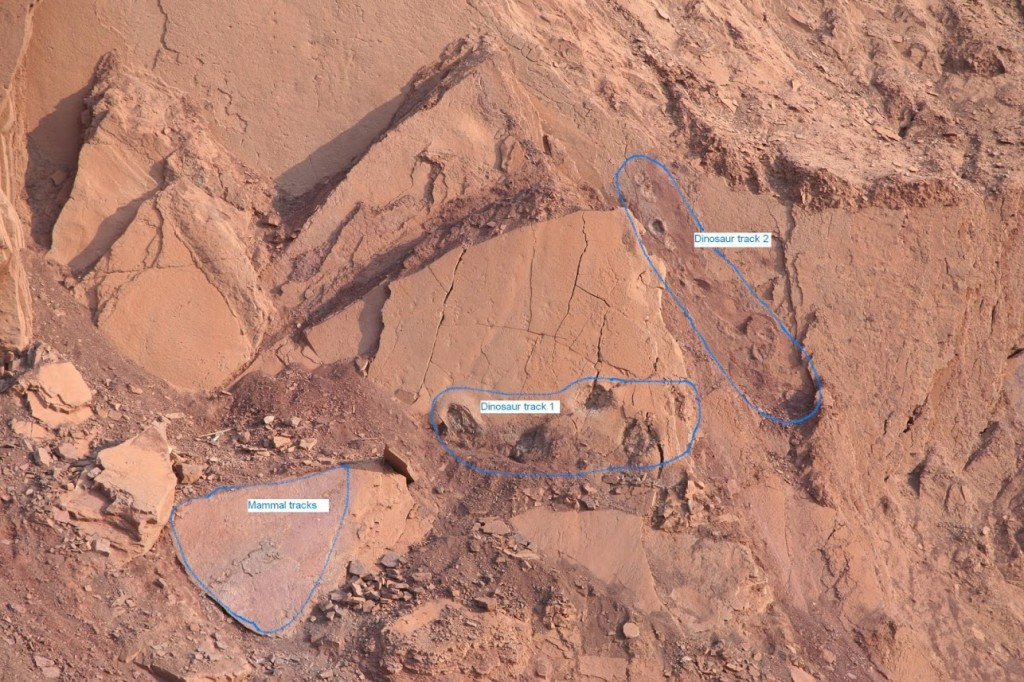
These 118 million year old footprints were created by dinosaurs, a crocodile and a large mammal, although they occur on separate beds, so were not produced at the same time (photo by Octávio Mateus).
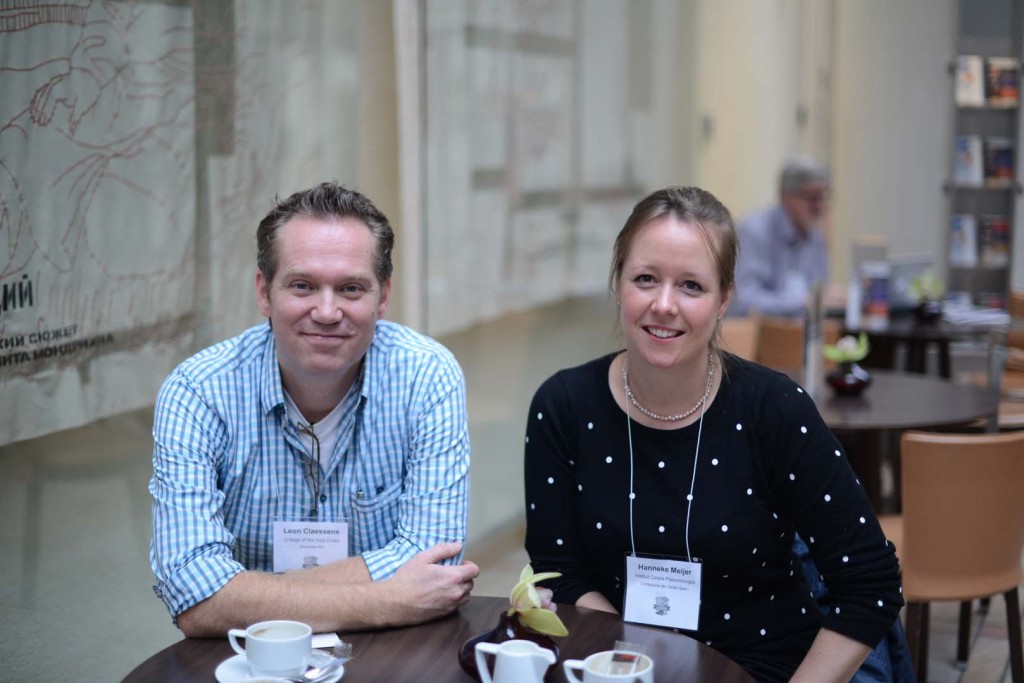
Leon Claessens and Hanneke Meijer of the dodo research group have recently made the re-discovery of a complete, 3D, specimen and are using it to re-write the ‘dodo anatomical atlas’.
Day Four
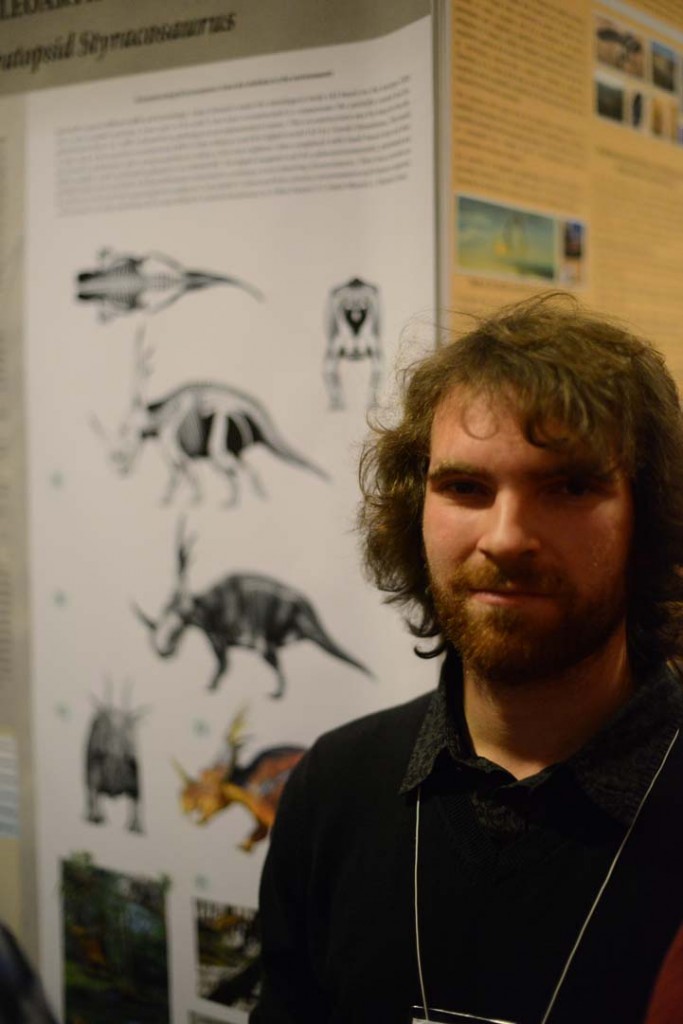
Simone Maganuco and colleges are hoping to produce an anatomical database to help palaeoartists attain a higher level of accuracy in their reconstructions.
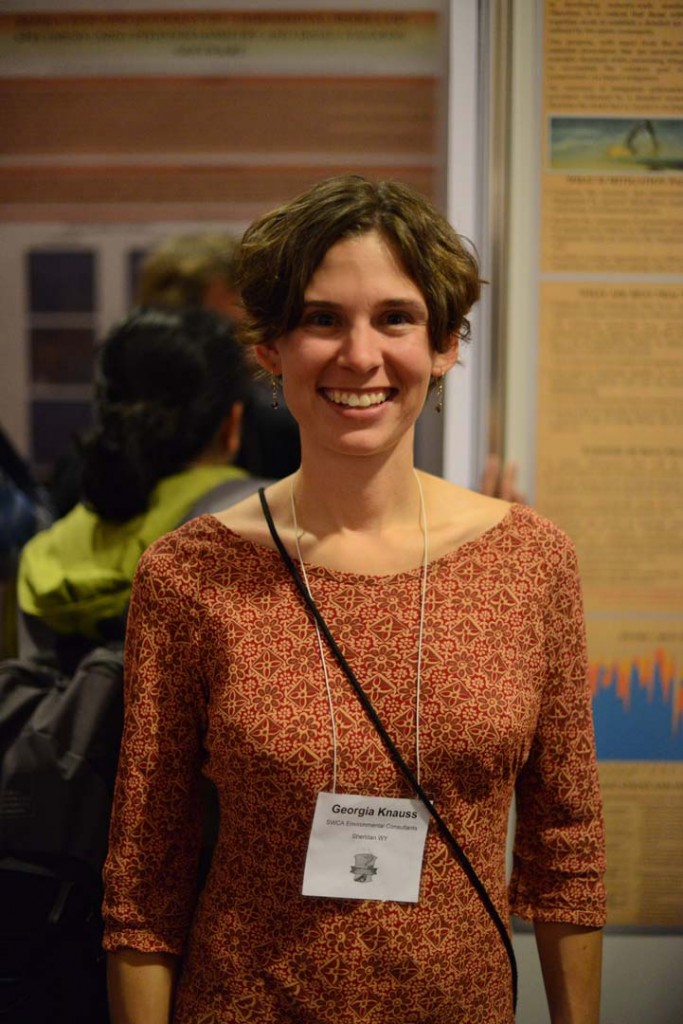
Mitigating the damage done by development is important for saving our palaeontological heritage. Georgia Knauss and colleagues have put together a set of best-practices for mitigation palaeontology.
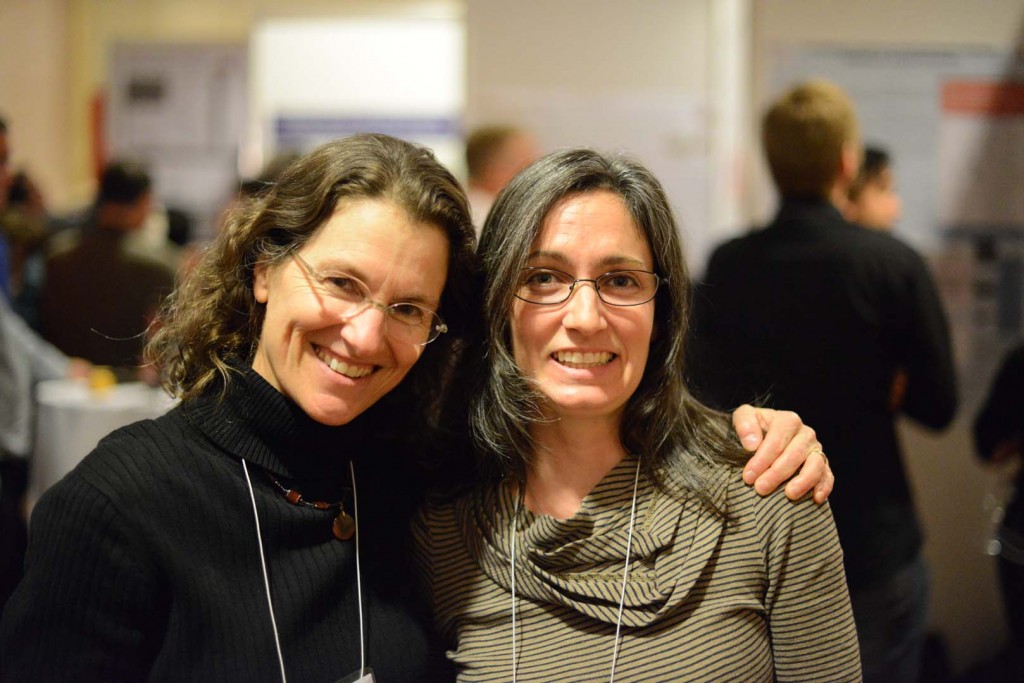
Suzann Goldberg and Amy Davidson, both of the AMNH, presented a poster (available to view below) on glues used in the palaeontological field.
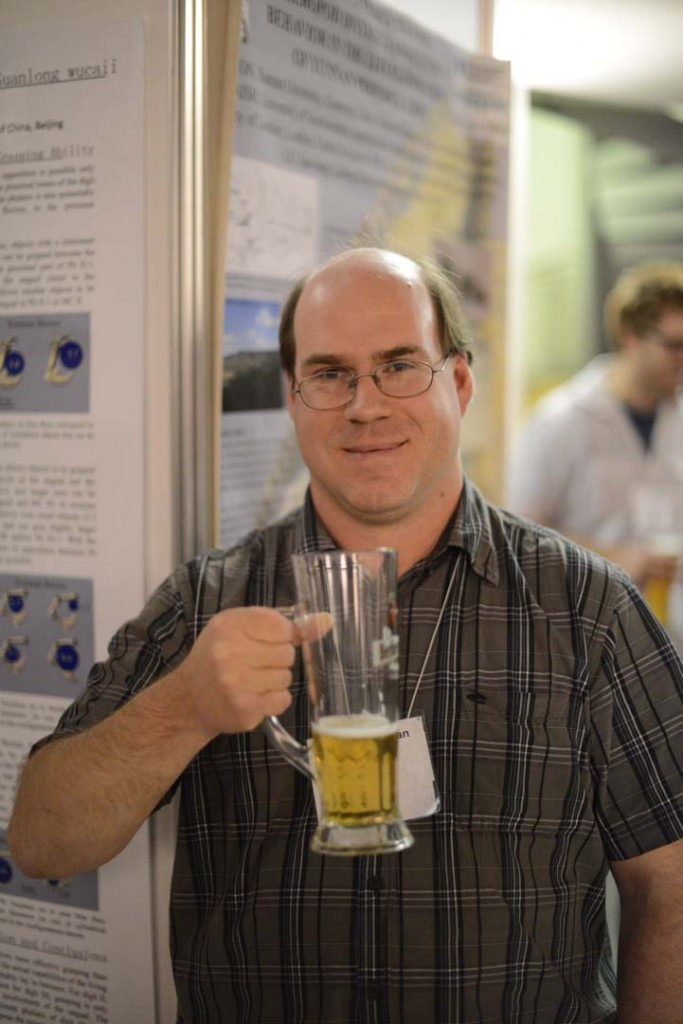
Corwin Sullivan has been modelling the forearms of the tyrannosauroid Guanlong wucaii. These limbs were longer than those of Tyrannosaurus and would have been able to have gripped thanks to their claws.
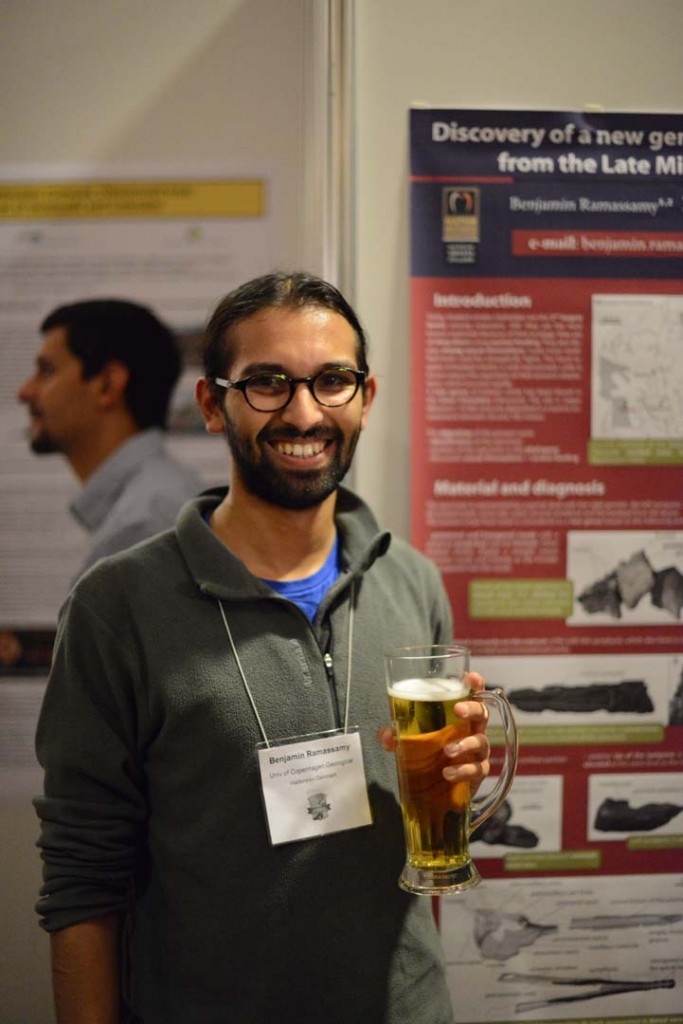
Long-snouted beaked whales are amongst the most poorly known of the cetaceans. Benjamin Ramassamy was reporting on a new genus from Denmark.
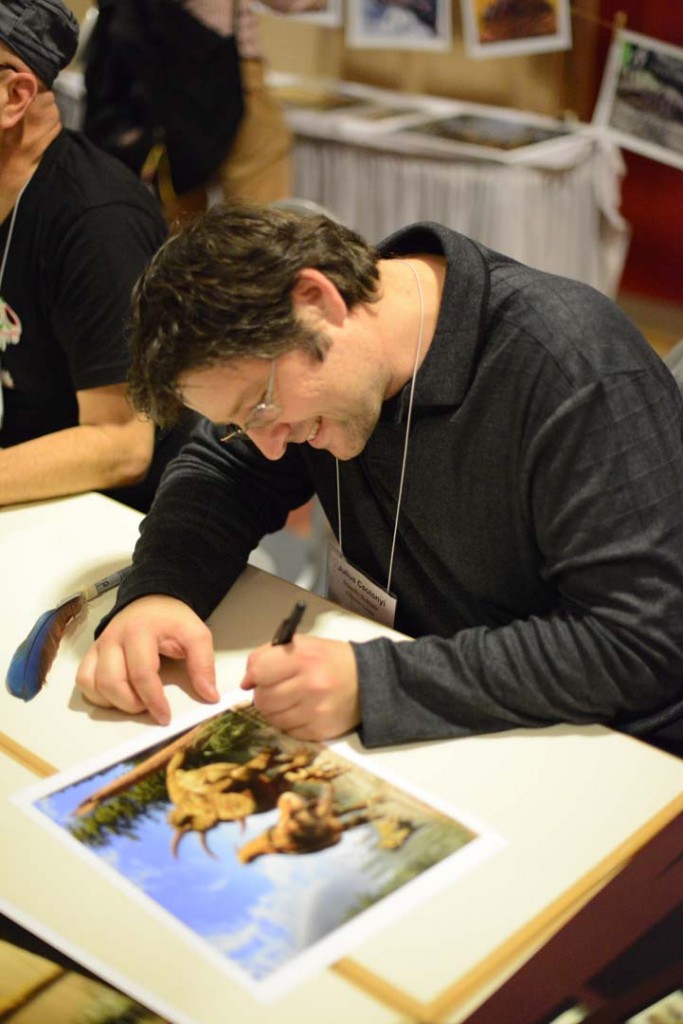
Palaeoartist and friend of the show, Julius Csotonyi, was at the show to sign prints and also to pick up his latest Lazendorf art prize.
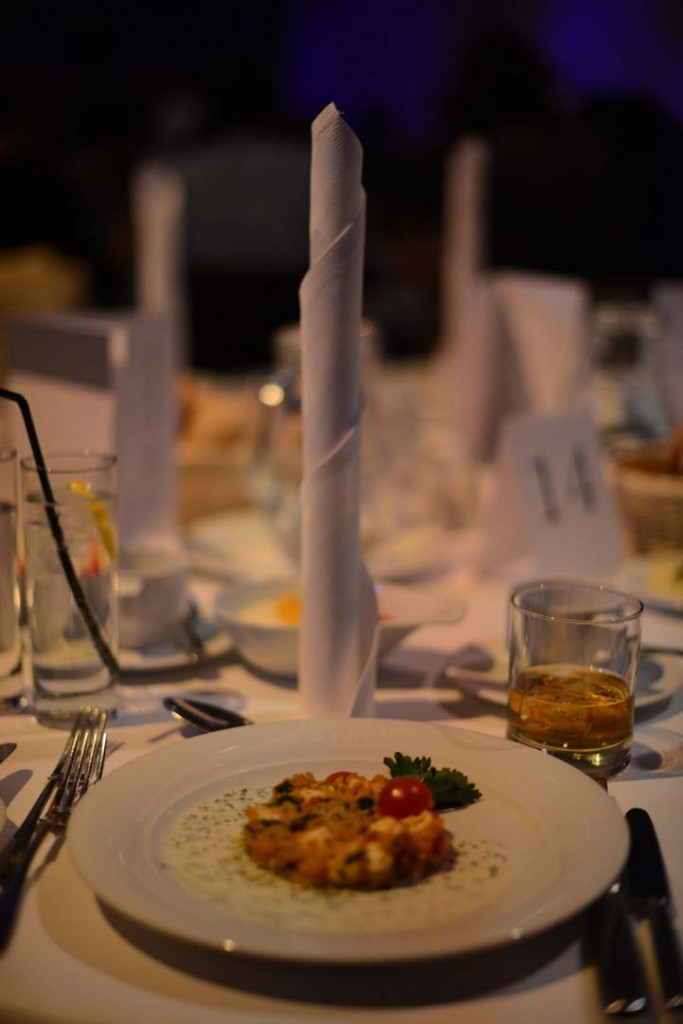
After the talks and posters was the awards ceremony where we were treated to fine dining and celebrated the achievements of members of the SVP.
After party
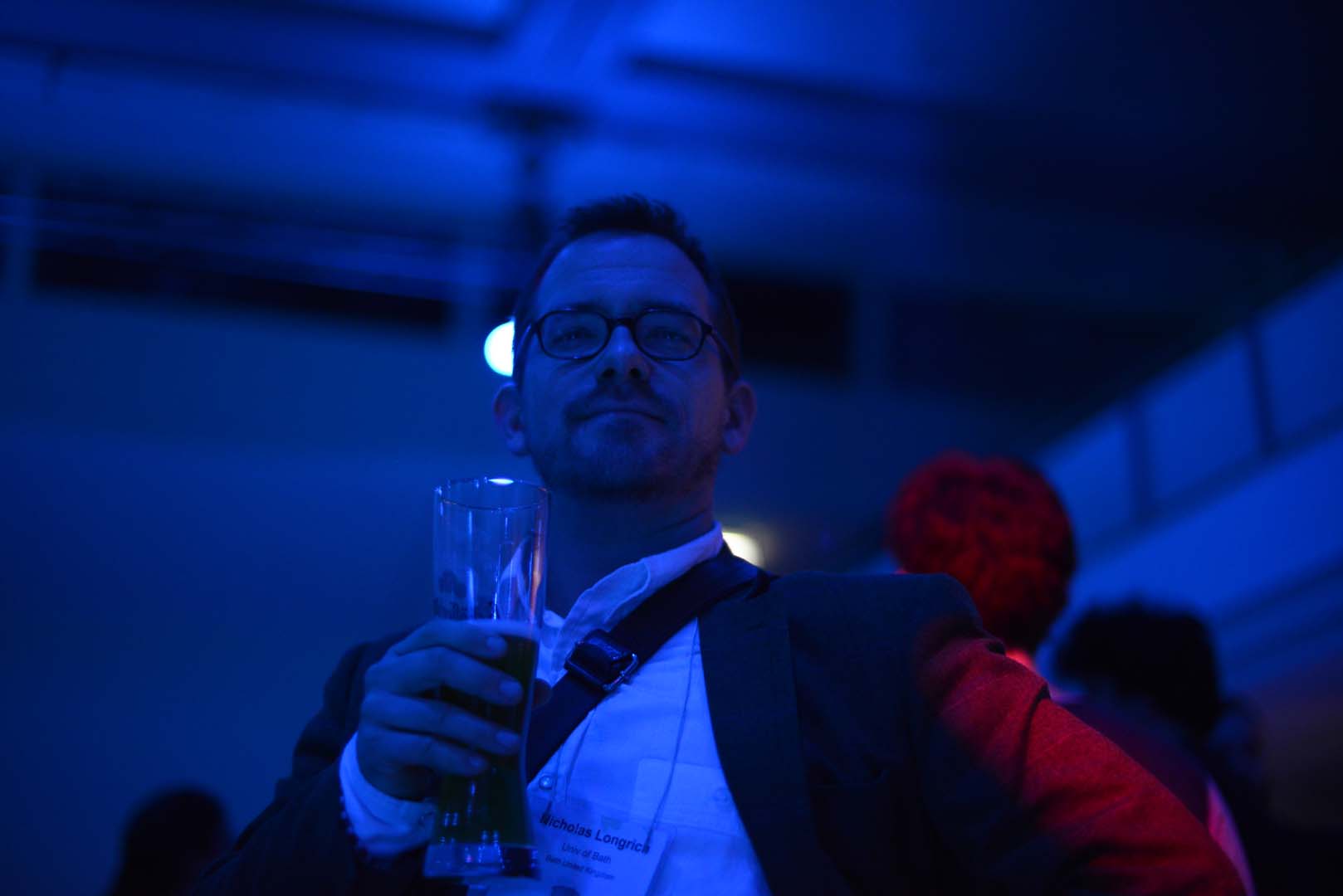
We also had the traditional name badge swap. This young and up-coming palaeontologist managed to swap name badges with Nick Longrich!
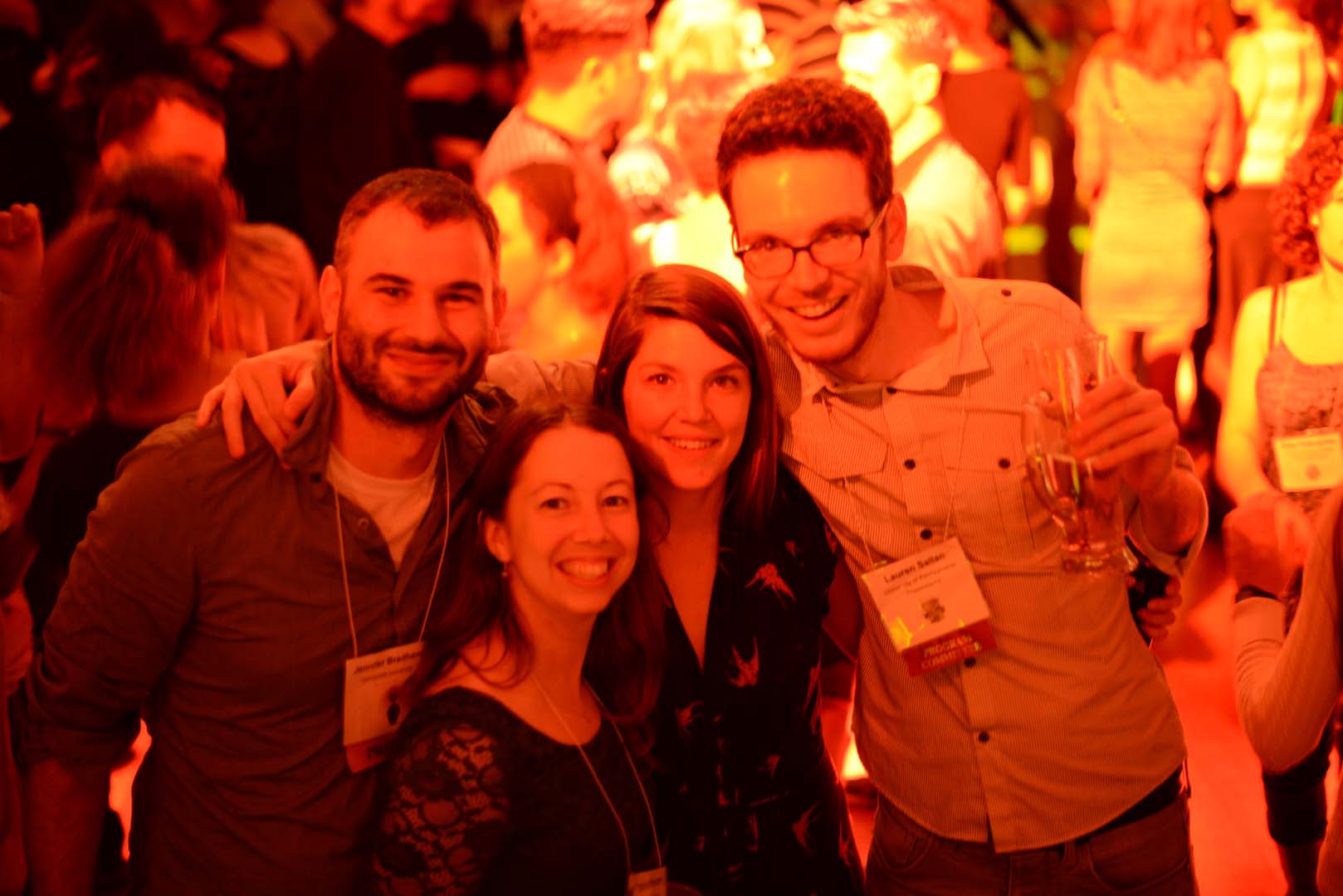
The whole Palaeocast team had a great time at SVP and we look forward to attending the next meeting in Dallas.

